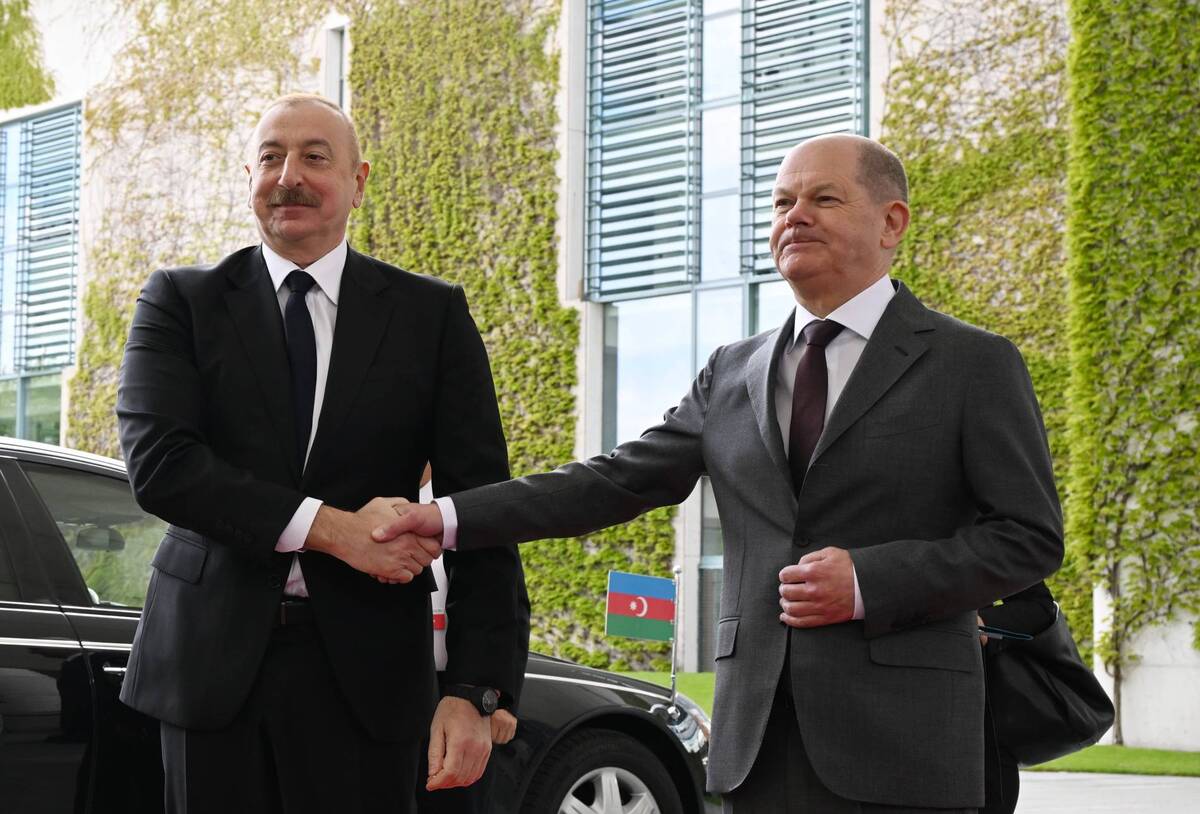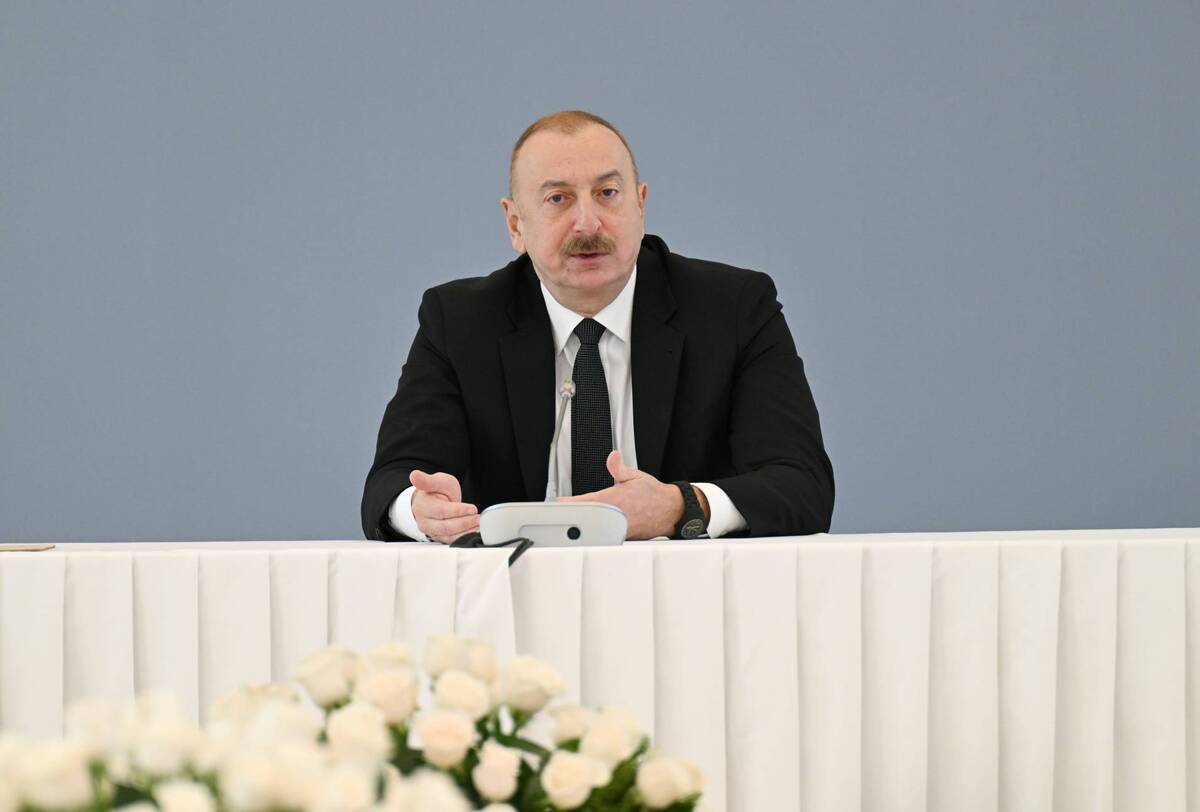- Home
- Time has been Ticking in the Armenia-Azerbaijan Peace Process. But a Window of Opportunity might just have reopened
7 December 2023
Time has been Ticking in the Armenia-Azerbaijan Peace Process. But a Window of Opportunity might just have reopened
A comprehensive peace settlement between Azerbaijan and Armenia could unlock a new era of prosperity across the South Caucasus. Once-high hopes of achieving a firm framework by the end of 2023 have been looking bleak. But now there’s a ray of hope.

Water reservoir near Gazakh, Azerbaijan. Image: Fariz Abasov/Shutterstock
As the clock ticks down on an agreement between Armenia and Azerbaijan to normalize relations, there had been concerns that not even a framework document would emerge by the end of the year. This follows the same disappointment last year when a sense of deja vu instead started to hang over the process in much the same way as it did under the now-defunct OSCE Minsk Group. As was the case back then, while there is reported progress on some issues, there is yet to be a consensus on others.
That had been particularly true since last year’s Prague Summit when attempts were made to insert French President Emmanuel Macron into the Brussels format. That came to a head in early December with the resulting failure to hold what were expected to be pivotal talks between the Armenian, Azerbaijani, and European Council leaders in the Belgian capital. What followed was the opposite.
Though full details are unknown, the remaining obstacles appear to concern the demarcation of the shared border and the maps used. There is also the issue of enclaves—pockets of sovereign Armenian and Azerbaijani land situated within each other’s territory— and notably four villages in the Gazakh region of Azerbaijan under Armenian control since the 1990s. Yerevan also points to a slither of its land out of its control for a little over a year.
Unblocking regional economic and transportation routes has also proven to be a problem. A clause in the November 2020 trilateral ceasefire statement concerned connecting Azerbaijan to its exclave of Nakhchivan through Armenia under the oversight of Russian border guards. Pashinyan signed that document but appeared reluctant as soon as the proverbial ink had dried. That has only increased as he continues to attempt to tilt Yerevan away from Moscow’s orbit.
Nonetheless, the link (that Baku calls the Zangezur Corridor) was meant to serve as the fundamental basis for interdependency between the countries and, thus, a sustainable peace. Instead, delay and disagreement over its implementation led to an impasse on the Lachin Corridor connecting Armenia to Karabakh, which in turn saw a spiralling series of events that indirectly resulted in the exodus of slightly over 100,000 ethnic Armenian residents in the aftermath of an operation to disarm local militias.
Azerbaijan has since made provisions for an alternative Zangezur Corridor that would pass through Iran, but if that’s fully implemented, Armenia would miss out on even more regional infrastructure projects, deepening its economic and geographic semi-isolation. Pashinyan instead talks of his own project—the Crossroads of Peace—including the link to Nakhchivan but on terms contradicting the ceasefire statement. Azerbaijan, Georgia, and Türkiye have not signed up, while Iran seems interested only in its northern direction.
However, to complicate matters, it is believed that the EU and U.S. are against any route that could benefit or involve Russia in light of sanctions against it and hopes that Moscow can be ousted from the South Caucasus.
A new obstacle has been the future of the Karabakh Armenians following their recent exodus as refugees to Armenia. In October, the Granada Statement issued by the Armenian prime minister, German Chancellor, and the French and European Council presidents called for their voluntary right to return and an “international mechanism” to monitor the process. However, Azerbaijan’s President Aliyev was not present and did not sign up to the text, viewing it as an imposition, especially from parties considered as mediators rather than arbitrators.
Moreover, if the rights and security for the return of the ethnic Armenian minority to Azerbaijan was to be ensured, then so too should the right to return of ethnic Azerbaijanis to Armenia. Speaking in Baku this week, Aliyev stressed the need for reciprocity, while some might add that there’s one of an implied interdependency too. Either both minorities should be mentioned in any agreement, or none would, he said.
But perhaps the most problematic obstacle of all is the geopolitical rivalry that has emerged following the Russian invasion of Ukraine. As Armenia attempts to diversify its defence and security policy away from Russia and especially towards France, there are increased fears that it might see what it perceives to be Western support as a way to delay an agreement. Analysts in Yerevan have long argued for such an approach to maintain a new status quo.
While few believe that a hard security guarantee will come, and while arms shipments have been limited and arguably inconsequential, worries have been that a new sense of misplaced complacency affecting policy might remain. Meanwhile, both Armenian and Azerbaijani societies continue to live in almost total separation, something that does not help the situation. Yerevan accuses Baku of preparing for a new conflict, something which it denies, while some Armenian analysts openly advocate for a military build-up to seize Karabakh in the future.
But neither Baku nor Yerevan walked away from the Brussels or U.S. formats despite disagreements on the role and responsibilities of the mediators. Then today came a sudden ray of hope. Azerbaijan released 32 Armenian servicemen, Armenia released two Azerbaijanis and the two countries issued a joint statement saying that they “share the view that there is a historical chance to achieve a long-awaited peace in the region”.
The statement reconfirmed the intention of normalizing relations to “reach the peace treaty on the basis of respect for the principles of sovereignty and territorial integrity.” Of course this is just words, but it’s highly encouraging given a mood of pessimism that had prevailed until today.
And to add to the impact, the statement included a pair of remarkable goodwill gestures: that Armenia would support Azerbaijan’s bid to host COP29 by withdrawing its own candidacy while Azerbaijan will support Armenian candidature for Eastern European Group COP Bureau membership.
Now what is needed is a mechanism to ensure that when Armenian and Azerbaijani foreign ministers engage bilaterally, they do so within the region. Though they did meet once in Tbilisi, they could make this a more regular venue to continue discussions - more frequently than before. That’s especially important in 2024 as the U.S. will be preoccupied with elections next year.
The need for a neutral and regional venue is vital going forward and it will be vital that mediators perform their tasks without focussing on their own geopolitical interests, mindful that any switch from conflict resolution to conflict management will likely prove disastrous. That was certainly the case prior to 2020.






